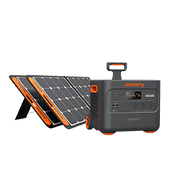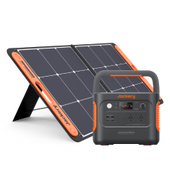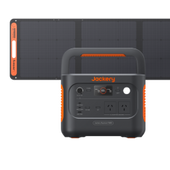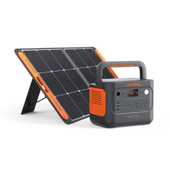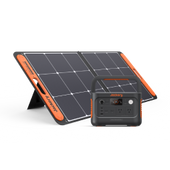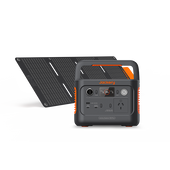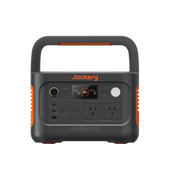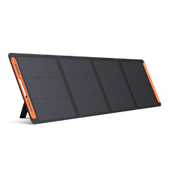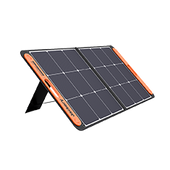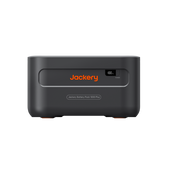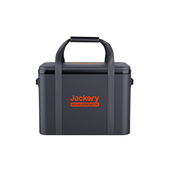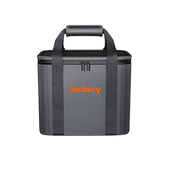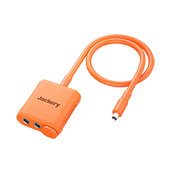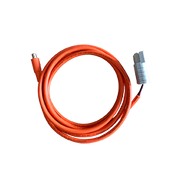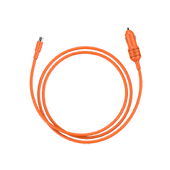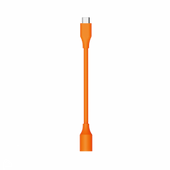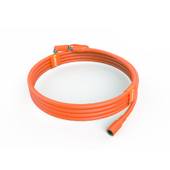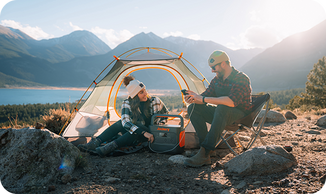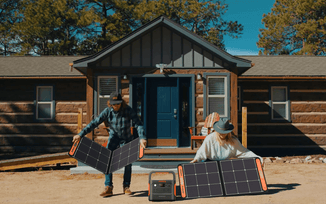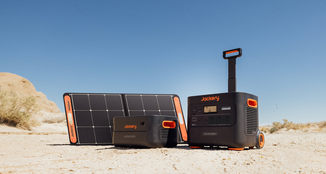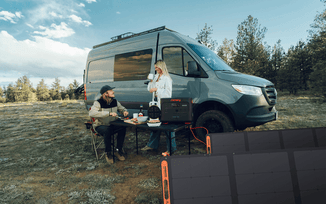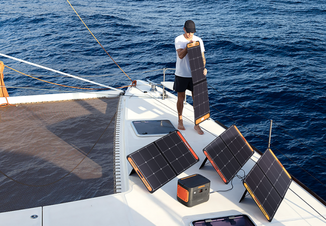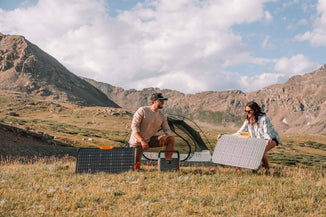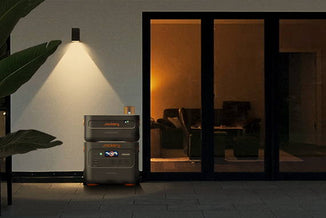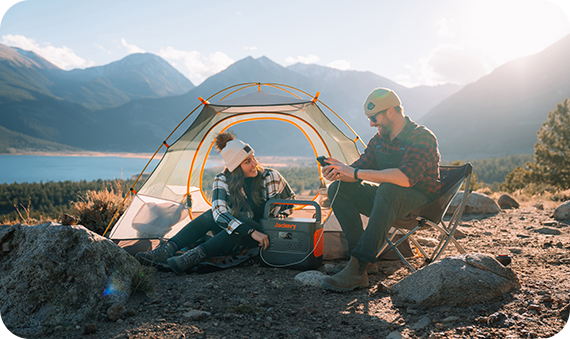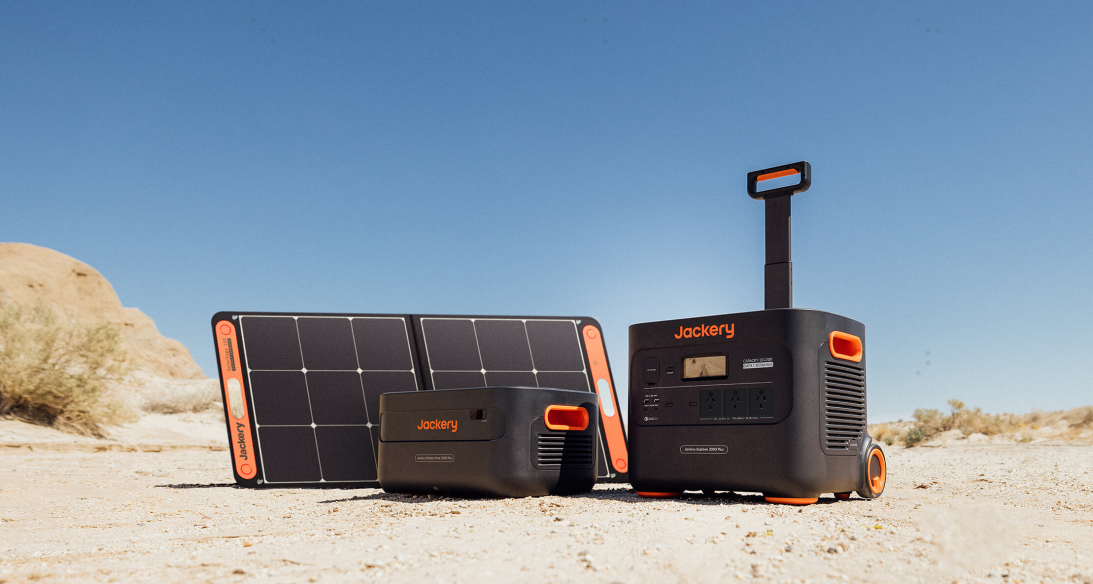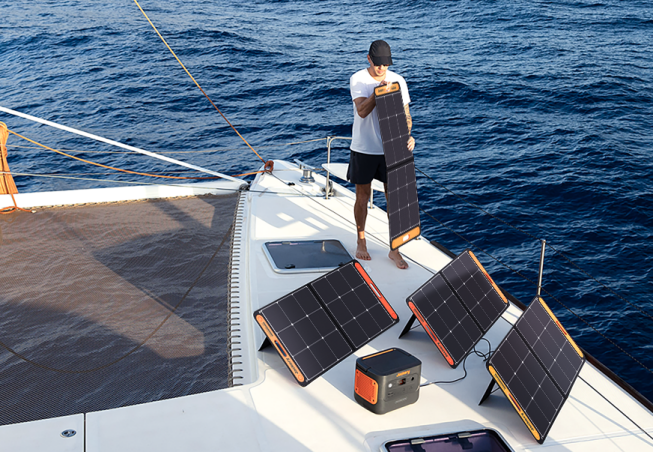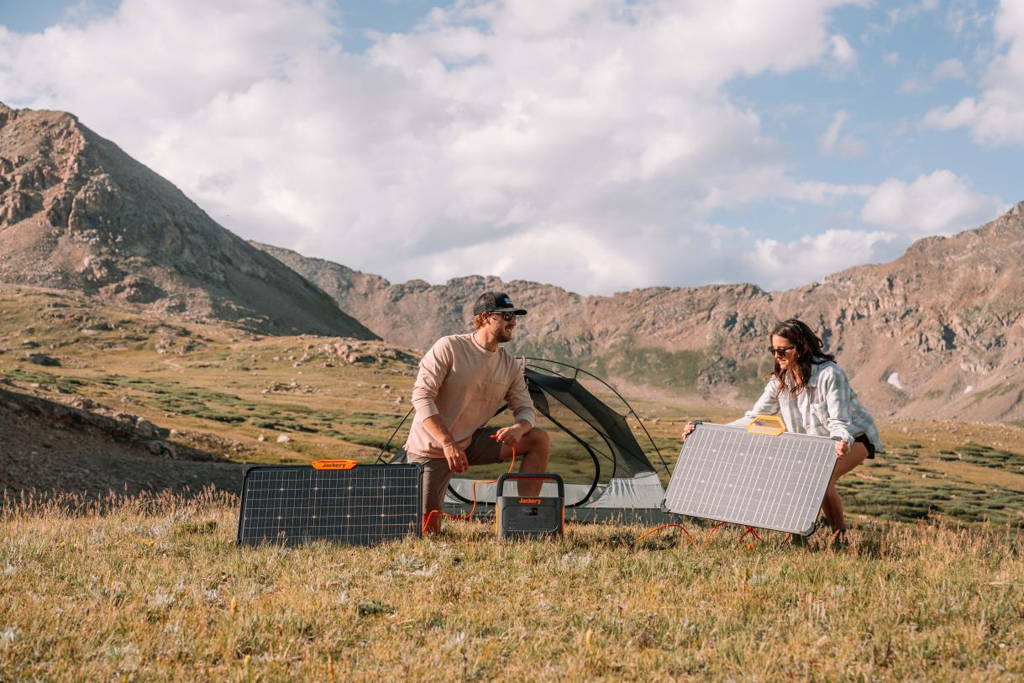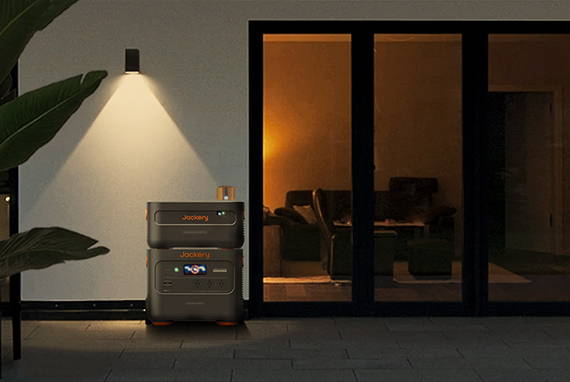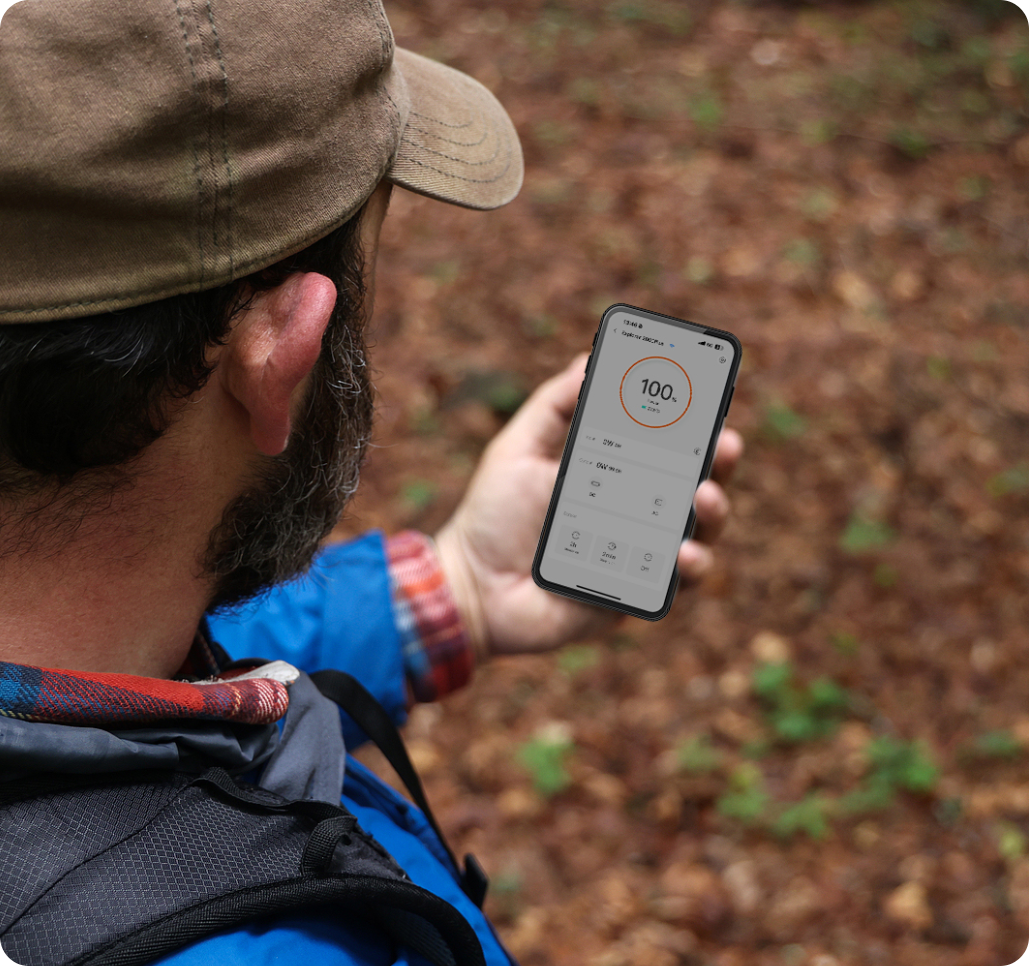|
Key Takeaways: |
|
- The Tatts Finke Desert Race is Australia's premier off-road motorsport event, held annually in the Northern Territory. - The race covers a gruelling 460 km round trip over two days from Alice Springs to Aputula (Finke) and back. - Medical teams and marshals are strategically placed throughout the course to handle emergencies and support racers. - The 2025 event runs from June 6-9, with competitor entries opening in February and March. - When attending the event, a portable power supply is far more important. You can consider taking a Jackery Portable Power Station, like Explorer 1000 v2 or 300 Plus, to power your essentials. |
What Is the Tatts Finke Desert Race?
The Tatts Finke Desert Race is Australia's premier off-road motorsport event, renowned for its challenging terrain and rich history. Held annually over the King's Birthday long weekend in June, this two-day race attracts competitors and spectators from across the globe to the heart of the Northern Territory.
A Legacy of Endurance and Speed
The Finke Desert Race originated in 1976 as a friendly competition between local motorcycle enthusiasts riding from Alice Springs to the Finke River and back. Over the years, it has grown into a world-class event, including bikes, vehicles, buggies, and quads. The race is a test of both speed and endurance, with runners travelling around 229 kilometres each way over some of Australia's most challenging desert terrain.
The Gruelling Race Route
The race begins in Alice Springs and continues south to the rural hamlet of Aputula (previously Finke). The course consists of five sections:
Start/Finish Line to Deep Well - 61 km
Deep Well to Rodinga - 31 km
Rodinga to Bundooma - 43 km
Bundooma to Mount Squires - 45 km
Mount Squires to Finke - 49 km
Participants must navigate a range of terrains, including red sand dunes, rocky outcrops, and spinifex-covered plains, making this one of the world's most difficult off-road events.
A Celebration of Motorsport and Community
Beyond the race itself, the Tatts Finke Desert Race is an important cultural event in the Northern Territory. It draws communities together, promotes local pride, and makes significant contributions to the surrounding economy. The event's popularity has skyrocketed, with hundreds of spectators camped out along the track to watch the high-octane action.
Whether you're a motorsports fan or an adventurer, the Tatts Finke Desert Race provides an unforgettable experience of speed, talent, and the spirit of the Australian outback.

The Evolution of the Tatts Finke Desert Race
The Tatts Finke Desert Race has evolved from a local challenge to one of the world's most difficult off-road races. This legendary event, held each year during the King's Birthday long weekend in June, draws participants and spectators from all over the world to the heart of Australia's Northern Territory.
A Storied History
The event originated in 1976 as a friendly competition between local motorcycle riders, racing from Alice Springs to the Finke River and back. The success of this inaugural event laid the groundwork for what would become a trademark of Australian motorsports.
The race eventually expanded to include automobiles and buggies in 1988, sparking fierce competition between two- and four-wheeled participants. The course, which is around 229 kilometres long, winds through difficult desert terrain, including red sand dunes, rocky outcrops, and spinifex-covered plains. The 2024 Tatts Finke Desert Race included outstanding performances and noteworthy milestones.
Bike Category: Local rider David Walsh won his fifth consecutive "King of the Desert" championship, tying Randall Gregory's record established from 1991 to 1995. Walsh finished the gruelling route in 3 hours, 38 minutes, and 12 seconds. Callum Norton and Korey McMahon took second and third place, respectively.
Car Category: Beau Robinson and navigator Shane Hutt won the Finke Desert Race for the first time after finishing on the podium in prior years. Driving a Mason Gen 2 Spec TT, the duo finished the race with a five-minute lead over their nearest competitors.
Looking Ahead: The 2025 Race
An increasing number of people are looking forward to the Tatts Finke Desert Race in 2025, which is scheduled to take place from June 6 to June 9. The deadline for submitting entries for the race is quickly approaching, with the deadline for motorcycle entries commencing on February 4 and the deadline for vehicle registrations beginning on March 4.
Prospective competitors are strongly encouraged to register as early as possible and to make certain that they meet all of the essential qualifications. One of these conditions is that they must have successfully completed at least one open event sanctioned by Motorcycling Australia during the previous five years.
The Tatts Finke Desert event has a long and illustrious history, and the 2025 edition promises yet another exciting chapter in that history. The event is continuing to gain fame.
Preparing for the Tatts Finke Desert Race
The Tatts Finke Desert Race is more than just a motorsports competition; it is an expedition that necessitates rigorous planning. Whether you're a contestant preparing for the demanding terrain or a spectator eager to witness the high-octane action, here's how to get the most out of your Finke experience.

For Competitors: Training, Gear, and Strategy
Physical and Mental Conditioning: The Finke Desert Race is well-known for its severe character, which requires both physical endurance and mental fortitude. Working with a personal trainer who understands the race's demands can be essential.
Tailored exercise programmes that emphasise core strength, cardiovascular endurance, and mental fortitude are crucial. Remember that it's more than just speed; it's about enduring hard conditions and staying focused over long distances.
Equipment Preparation: Your vehicle or bicycle must be in excellent condition. Regular maintenance inspections are critical, particularly of suspension systems, tyres, and brakes. Given the race's rugged terrain, ensuring your kit can survive the rigours is critical. Additionally, become acquainted with the race's technical specifications and guarantee compliance with all regulations.
Acclimatisation and Practice: If possible, arrive in Alice Springs ahead of time so that you can become used to the local environment. By practising on terrains comparable to the one you will be facing, you can improve your plan and respond to the situation. One way to get a competitive advantage is to become familiar with the subtleties of the course.
For Spectators: Planning, Accommodation, and Safety
Early Planning and Bookings: Every year, the Finke Desert Race draws many thousands of spectators, which results in high demand for lodgings and tickets to the event. When planning your stay, it is best to make reservations well in advance. Hotels in Alice Springs and camping spots along the marathon route are both options for participants.
Travel Packages: You might want to consider purchasing official vacation packages that include exclusive experiences, event tickets, and lodgings all in one package. These packages typically include VIP access to specific places, guided tours, and other amenities, ensuring that the experience is both complete and hassle-free.
Safety Protocols: Safety is critical. Always remain in designated spectator areas and follow event officials' directions. Maintain a safe distance from the track and always stay aware of your surroundings. Remember that the desert environment can be unexpected, so bring drink, sunscreen, and proper clothing.
Key Dates and Entry Information
Event Dates: June 6-9, 2025
Bike Entries Open: February 4, 2025
Car Entries Open: March 4, 2025
Ensure you meet all entry requirements and submit applications promptly. The official Finke Desert Race website provides detailed information on entry criteria and regulations.

Safety First: Essential Regulations and Precautions
The Tatts Finke Desert Race is more than just an exciting motorsport event; it also prioritises the safety of its racers, spectators, and volunteers. Over the years, the race has introduced extensive safety precautions and rules to maintain a safe atmosphere for all participants.
Competitor Safety and Regulations
Participants in the Finke Desert Race must follow strict safety protocols. For example, all motorcycle entrants must have participated in at least one open competitive event sanctioned by Motorcycling Australia within the previous five years. This qualification guarantees that riders have the appropriate experience to navigate the difficult desert terrain.
Competitors must also follow the event's supplementary regulations, which address issues such as vehicle specs, safety equipment, and race conduct. These standards are intended to ensure a high level of safety and fairness throughout the event.
Spectator Safety Measures
When it comes to the Finke Desert Race, the protection of spectators is of the utmost concern. In order to ensure the safety of those who are participating in the 229-kilometre race, the organisers have devised specific requirements. Key precautions include the following:
1. Maintaining a minimum distance of 30 meters from the track at all times.
2. Observing 'No Go' zones, especially on the outside of corners and other high-risk areas.
3. Obeying all signage and instructions from Spectator Marshals and event officials.
4. Avoiding standing on the outside of corners, where vehicles are more likely to veer off course.
Failure to comply with these safety measures may result in the immediate suspension of the race, which is necessary to prevent accidents.
Emergency Services and Medical Support
Teams of St. John Ambulance are stationed at each checkpoint along the race course in order to guarantee that medical treatment is provided in a timely manner. In the event of an emergency, these medical personnel are prepared to handle the situation and treat injured patients immediately. It is possible that patients will be taken to specialised medical institutions in the event of serious occurrences so that they might receive additional treatment.
Fire Safety and Camping Guidelines
Due to the fact that the event takes place in a dry and desolate area, fire safety is an extremely important concern. Spectators who are camping near the track are to do the following:
1. Build manageable campfires and ensure they are fully extinguished before leaving the site.
2. Avoid using flammable materials or placing pressurised containers near fires.
3. Supervise children around open flames at all times.
These safety measures contribute to the prevention of accidents and the protection of the natural environment.
Continuous Improvement and Community Involvement
The organisers of the Finke Desert Race are dedicated to consistently improving the execution of safety precautions. In response to previous occurrences, including the terrible spectator fatality that occurred in 2021, the event has implemented more stringent safety standards and enhanced the number of spectator marshals throughout the track.
Participation from the community is an essential component in preserving a secure setting. To help promote a culture that values safety and accountability, spectators are strongly encouraged to report any unsafe behaviour to the event officials. By complying with these safety requirements and regulations, each participant and attendee contributes to the future success and longevity of the Tatts Finke Desert Race.
Furthermore, if you are interested in the motorcycle tours, we recommend:
Discovering Alice Springs: Adventures Beyond the Tatts Finke Desert Race
Although the Tatts Finke Desert Race is one of Alice Springs's most popular attractions, the region also offers a plethora of other experiences that highlight its one-of-a-kind landscapes, rich Indigenous culture, and spirit of adventure.

Embrace the Natural Wonders
These ancient ranges, known as the MacDonnell Ranges, are located to the east and west of Alice Springs and are characterised by a number of picturesque gorges and waterholes. Some notable locations include:
Ellery Creek Big Hole: A picturesque swimming spot surrounded by high red cliffs.
Simpsons Gap: Known for its towering cliffs and resident black-footed rock wallabies.
Standley Chasm: A narrow gorge that lights up in fiery reds during the midday sun.
These locations provide opportunities for activities such as hiking, photography, and completely submerging oneself in the scenic splendour of the outback.
Delve into Indigenous Culture and Art
Araluen Cultural Precinct: This hub houses multiple galleries and museums, including the Albert Namatjira Gallery, showcasing the works of renowned Indigenous artists.
Iltja Ntjarra Many Hands Art Centre: A community-driven space where visitors can view and purchase artworks by descendants of the Hermannsburg School, continuing the legacy of watercolour landscapes.
Engage in Unique Experiences
Alice Springs Desert Park: An immersive introduction to the flora, fauna, and cultures of Central Australia, offering insights into desert ecosystems and Aboriginal traditions.
Hot Air Ballooning: Experience the vastness of the outback from above, with sunrise flights offering panoramic views of the desert landscape.
Kangaroo Sanctuary: Home to rescued kangaroos, this sanctuary provides guided tours where visitors can learn about these iconic marsupials and the efforts to rehabilitate them.
Explore Historical Sites
Alice Springs Telegraph Station: The original site of the first European settlement in Alice Springs, offering a glimpse into the town's colonial past.
Hermannsburg Historic Precinct: Located west of Alice Springs, this area preserves the history of the Lutheran mission and is closely tied to the life of artist Albert Namatjira.
Practical Tips for Visitors
Best Time to Visit: The cooler months from April to October are ideal, offering mild daytime temperatures and crisp nights.
Accommodation: Options range from camping under the stars to comfortable hotels in town. It's advisable to book early, especially during major events like the Finke Desert Race.
Transportation: While Alice Springs is accessible by air, having a vehicle allows for greater flexibility in exploring the surrounding attractions.
Not only does Alice Springs serve as the starting place of the Tatts Finke Desert Race, but it is also a destination that is abundant in activities that perfectly embody the spirit of the Red Centre of Australia.

Jackery Portable Power Stations Explained
The Tatts Finke Desert Race, held in the remote Australian Outback, is an extreme test of endurance for competitors and their support crews. For any team or spectator setting up camp along the brutal Alice Springs to Finke track, a Jackery Portable Power Station is not just a convenience; it's an essential piece of gear.
The Finke Desert Race traverses the vast, remote desert country. There are no power outlets, no established campgrounds with hookups, and no reliable infrastructure along much of the 220+ km track. Support crews and spectators set up temporary camps in the open desert. Everything you need, including power, must be brought with you. A Jackery provides independent, portable power for your camp.
Jackery Explorer 1000 v2
The Tatts Finke Desert Race is a demanding off-road event in the Australian outback. Competitors support crews, and spectators operate in remote conditions with limited access to grid power. This makes portable power solutions like the Jackery Explorer 1000 v2 highly valuable. Finke is in the desert, far from traditional power outlets. A portable power station like the Jackery Explorer 1000 v2 allows you to run essential electronics wherever you are.

1070Wh Capacity & 1500W Output: This capacity is suitable for a range of devices you might need. The 1500W (and 3000W surge) output means it can handle higher-wattage appliances, not just small electronics. The 1000 v2 uses LiFePO4 batteries, known for their durability and long lifespan (4000 cycles to 70%+ capacity), making it a reliable investment for multiple Finke races or other outdoor adventures.
Compact and Lightweight: The Explorer 1000 v2 is designed to be relatively small and light (around 10.8 kg / 23.8 lbs), making it easy to transport in a support vehicle or even carry to a temporary camp. The new fold-down handle also makes it more streamlined.
Multiple Charging Options: Fast charging in about 94 min (or 59 min in emergency supercharging mode). While slower (around 12 hours), it allows you to charge on the go. Pairing it with Jackery SolarSaga 200W panels (up to 400W input) provides a sustainable way to recharge in the sunny desert environment, extending your power supply indefinitely. This is crucial for multi-day events.
Robust Build: Designed for outdoor use, the Explorer 1000 v2 has a durable, flame-retardant shell and meets safety standards like UL2743. The ChargeShield 2.0 Technology provides multiple layers of protection and safety mechanisms for reliable use. At less than 22dB, it operates quietly, which is a significant advantage in a camp setting where you don't want the constant noise of a traditional generator.
|
Jackery Explorer 1000 v2 Running Time |
|
|
Portable Fridge (60W) |
15H |
|
Coffee Maker (550W) |
1.5H |
|
Projector (100W) |
8H |
|
Phone (29W) |
34 Times |
|
Laptop (80W) |
13 Times |
(*The working hours are only for reference; the actual working hours depend on your usage.)
Jackery Explorer 300 Plus
While the Jackery Explorer 1000 v2 is an excellent choice for substantial power needs at the Tatts Finke Desert Race, the Jackery Explorer 300 Plus also has a more portable design, particularly for specific users or situations.

Extremely Compact: The Explorer 300 Plus weighs only 3.75 kg (8.27 lbs), making it incredibly easy to carry by hand, toss into a backpack, or store in a crowded vehicle. This is a huge advantage if you frequently move between pit stops, set up temporary viewing areas, or just need a light power source for personal use.
288Wh Capacity & 300W Output (600W Peak): While significantly smaller than the 1000 v2, the 300 Plus still provides ample power for a range of critical devices, such as phones, tablets, cameras, GPS devices, and more. It features a pure sine wave AC outlet, two 100W USB-C PD ports, and a USB-A port, allowing you to charge multiple devices simultaneously and efficiently.
LiFePO4 Battery Chemistry: Like the 1000 v2, the 300 Plus uses LiFePO4 batteries, offering excellent longevity (3000 cycles to 80%+ capacity) and stability, which is crucial in the extreme temperatures and vibrations of the desert environment.
Versatile Recharging Options: It can recharge from 0-80% in just 2 hours via a wall outlet, making it quick to top up when grid power is briefly available (e.g., at a hotel in Alice Springs before heading out). Also, it can be paired with Jackery SolarSaga 100W solar panels for sustainable recharging in the sunny Finke desert. While slower than larger units, it can effectively extend its run time for smaller loads.
|
Jackery Explorer 300 Plus Running Time |
|
|
Mobile Phone (29W) |
13 Times |
|
Camera (8.4W) |
12 Times |
|
Laptop (80W) |
2.2 Times |
|
Go Pro (5W) |
40 Times |
|
Ventilator (20W) |
8.2H |
(*The working hours are only for reference; the actual working hours depend on your usage.)
FAQs
The following are the frequently asked questions about measuring a caravan in Australia.
1. Can anyone race in the Finke Desert Race?
Individuals who meet specified eligibility requirements can participate in the Finke Desert Race. Entrants for bike competitions must hold a Senior National Motorcycling Australia Licence (no One Event Licence) and have recently competed in recognised off-road events such as the Finke Desert Race, national off-road competitions, or other major official off-road events within the last five years. This assures that all participants have the requisite abilities and experience to participate safely under the challenging race conditions.
2. What time does the Finke race start?
The Finke Desert Race usually starts with a prologue on the Saturday of the race weekend, which establishes the starting order for competitors. While actual start times may vary, the event schedule and gate opening timings are published to competitors and spectators in advance.
3. How hard is the Finke Desert Race?
The Finke Desert Race is known as one of the most difficult off-road races in the world. Competitors must navigate challenging circumstances such as deep sand, red mud, rocks, and severe heat as they travel around 229 kilometres through Australia's isolated desert environment. The race requires remarkable physical endurance, mental toughness, and mechanical dependability, pushing both riders and machines to their limits.
4. What date is Finke 2025?
The 2025 Tatts Finke Desert Race will take place from Friday, June 6, to Monday, June 9, 2025. This yearly event takes place over the King's Birthday long weekend in June, bringing together contestants and spectators from all over Australia and beyond.
5. How to enter Finke 2025?
To participate in the 2025 Finke Desert Race, racers must complete the official entry process. Bike entries will open on Tuesday, February 4, 2025, at 9:30 a.m. NT time and car entries will open simultaneously on Tuesday, March 4, 2025. Prospective competitors must ensure that they meet all eligibility conditions, which include possessing the necessary licences and adequate off-road racing experience. The official Finke Desert Race website provides detailed entry information and paperwork.
Final Thoughts
Attending or participating in the Tatts Finke Desert Race is an amazing experience that combines adrenaline, adventure, and outback culture. Finke provides a one-of-a-kind piece of Australia, from the sound of motors to the breathtaking desert scenery and the welcoming atmosphere of the Alice Springs community.
By thoroughly planning, respecting the environment, and embracing the event's rich traditions and history, you will leave with more than just memories but a deeper appreciation for this incredible motorsport extravaganza. Whether you're spectating or racing, the 2025 Finke Desert Race is your ticket to an unforgettable experience.

